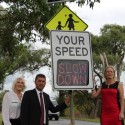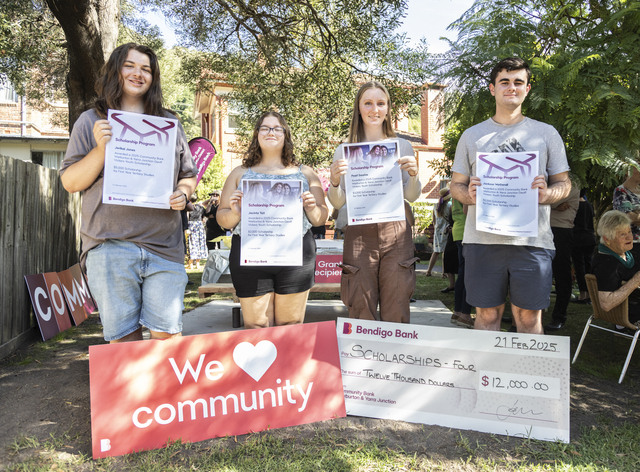By TALIN HADROW
THE fight continues for the installation of flashing 40km/h speed restriction signs at Woori Yallock Primary School.
VicRoads has consistently rejected the proposal, saying the school doesn’t meet the criteria in terms of the volume of passing traffic.
However, data is now being collected that it is claimed will prove just how dangerous the Healesville-Kooweerup Road, where the school is located, is – irrespective of volume.
The Boylan Group, a Queensland company specialising in speed road safety products, have donated a portable flashing speedometer sign to the school for four weeks.
The sign not only demands that drivers “slow down” in the school zone, it also records the speed of all passing vehicles.
According to Boylan representative, Craig Rush, results to date have found that 85 per cent of vehicles passing through the school zone during school zone times, were driving at 60km/h – 20km/h over the legal limit.
Data continues to be recorded which puts the average speed at 46.1km/h during school zone hours.
Mr Rush met on Thursday 18 February, with Eildon MP Cindy McLeish, Shadow Minister for Education Nick Wakeling, road safety advocate Bev Brock and School Council president Kate Russell, to look at what needs to be done to convince the State Government – and VicRoads, of the need for the electronic signs.
Mr Rush was outraged by the lack of the speed zone safety signs around the school, and with the behaviour of drivers
“This is a death trap,” he said.
“I fly all over Australia for work, and this is the worst school zone I have ever seen.”

Positioned alongside paddocks on a main transport route, trucks, cars and motorbikes regularly ignore the speed limit even during school zone times.
VicRoads has consistently maintained that the volume of traffic passing the school is not high enough to warrant flashing safety signs.
However, traffic volume is not what is making this road so dangerous, according to Ms McLeish.
She said in winter, weather conditions that restrict visibility were also a major danger to the students and parents who used the crossing.
The Liberal Government made a commitment to fund the electronic signs before the last election, and Ms McLeish has been championing the cause for the school in an effort to convince the State Labor Government that the focus needs to be on speed and conditions surrounding the school, rather than the volume of traffic.
“It’s not the volume that’s important,” she said. “It’s the fact that you can’t see the person with the sign, because of the fog,” she said.
With the installation of the ‘slow down’ signs donated by Boyland Group and the data coming from them, Ms McLeish says she feels more confident VicRoads and the State Government will finally take action.
Ms Brock said the school now had a valuable tool in the data that would be made available from the Boylan technology.
“We must adjust to the school zone conditions, or pay the consequences,” she said.
Mr Wakeling agreed, saying that each school needs to be considered according to their different circumstances, not judged solely on traffic volume.
Ms Russell welcomed the support from Boylans, saying she believed the data collected would strengthen the case for a permanent 40km/h electronic sign.
She said it was about safety for the school community.
“Are we just going to live day to day hoping that nothing will happen,” she asked.
She said the school would continue to lobby for the electronic speed zone signs to be installed to ensure the safety of the children and the wider community.







